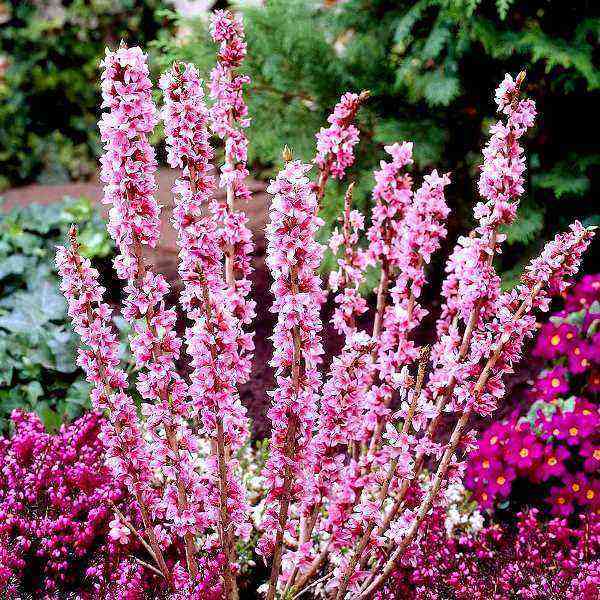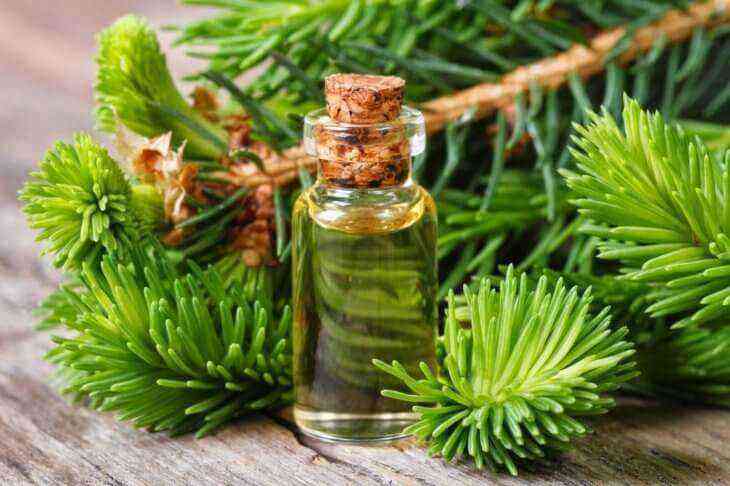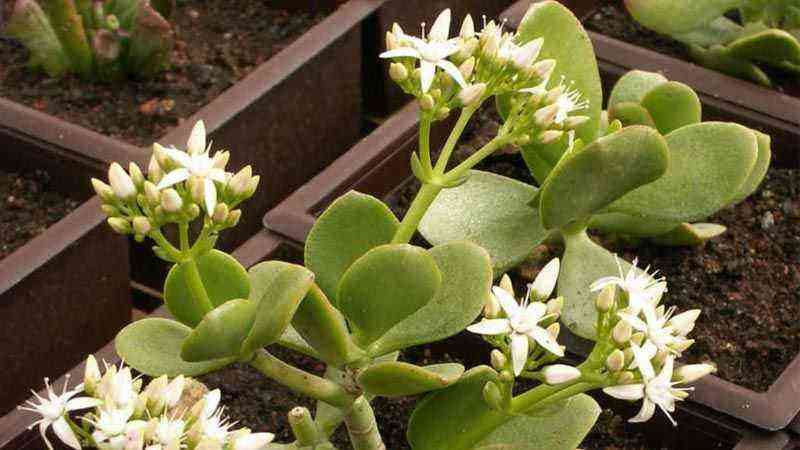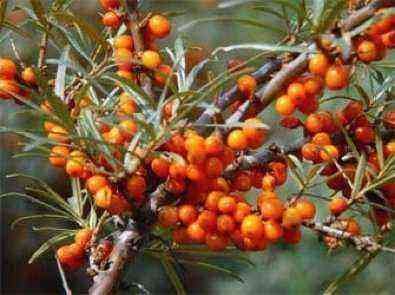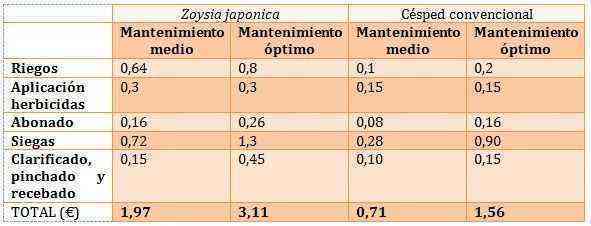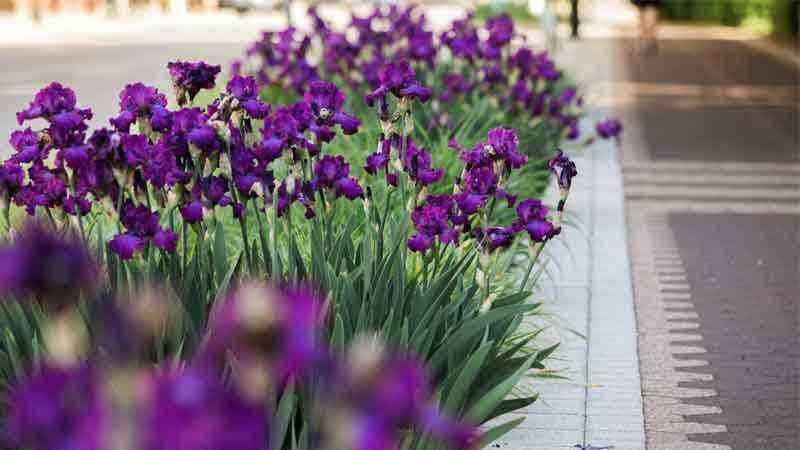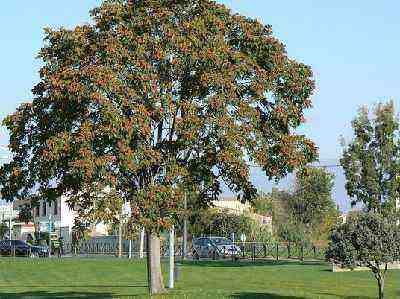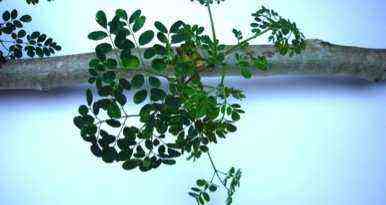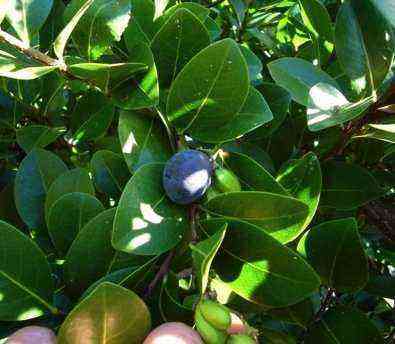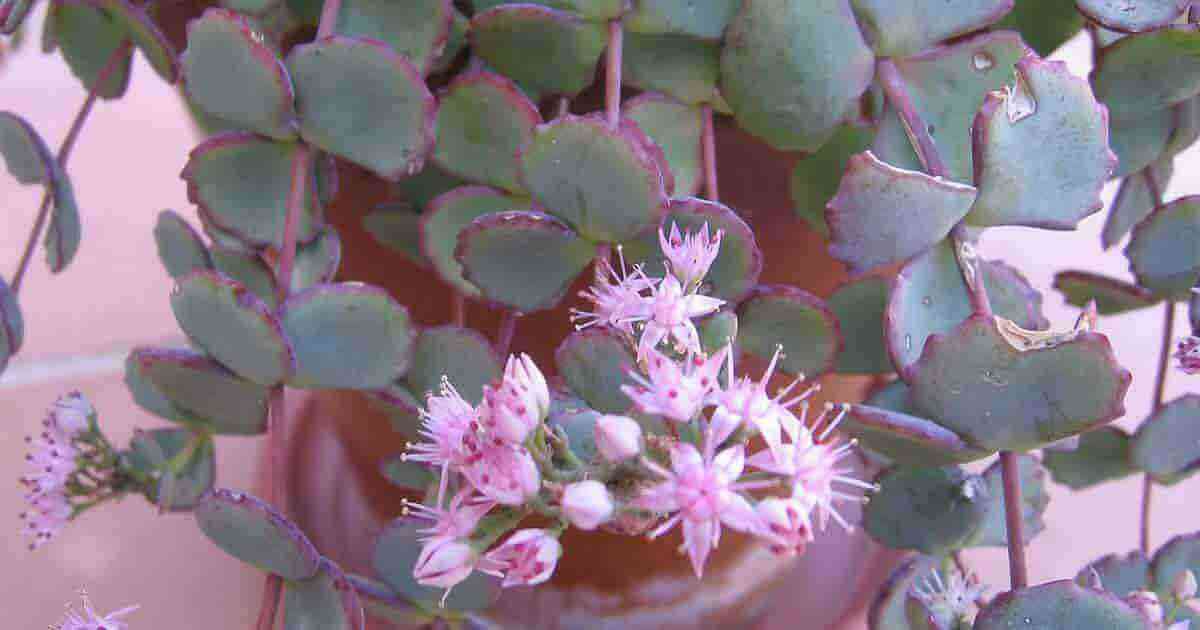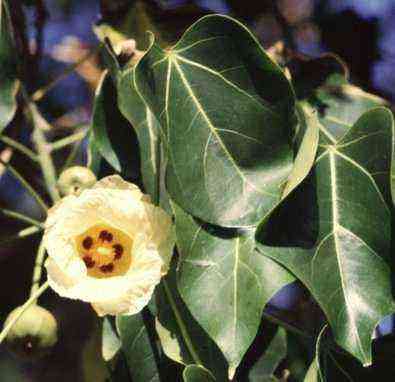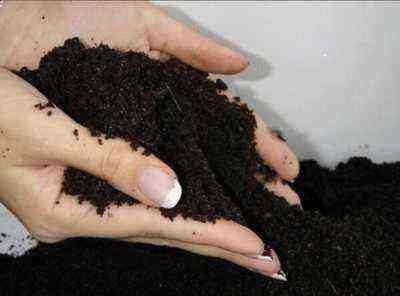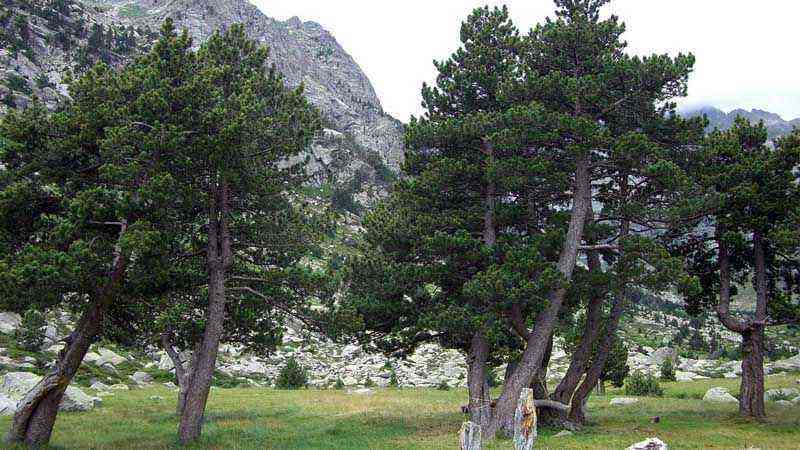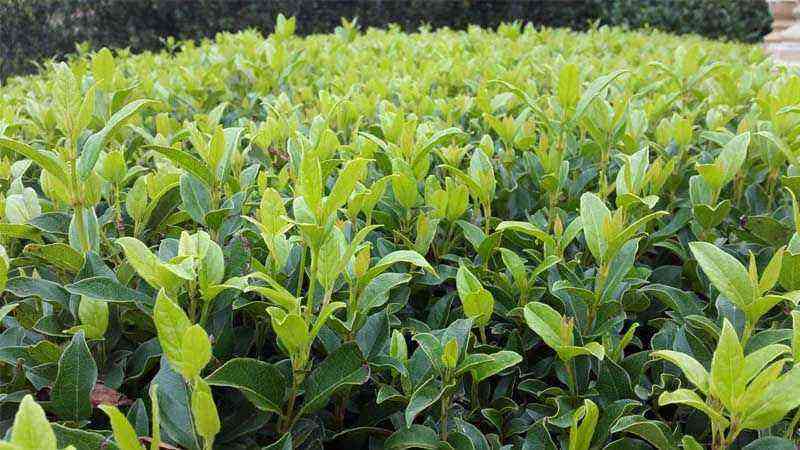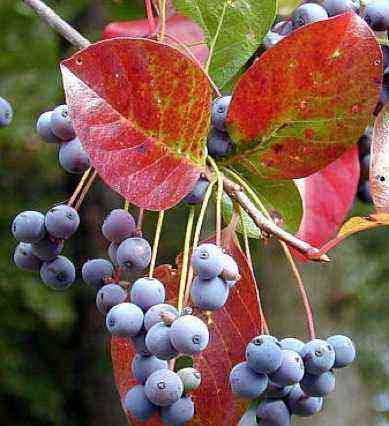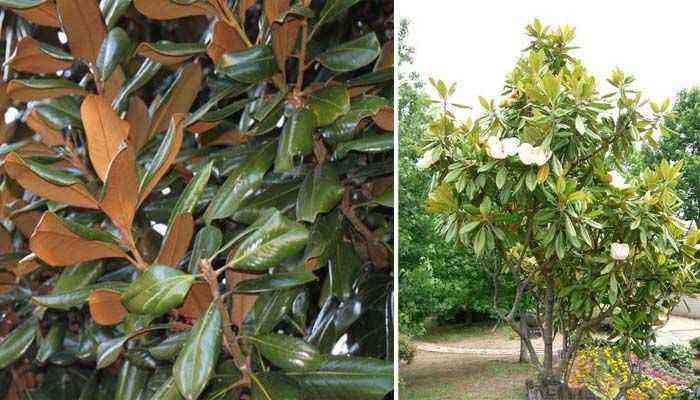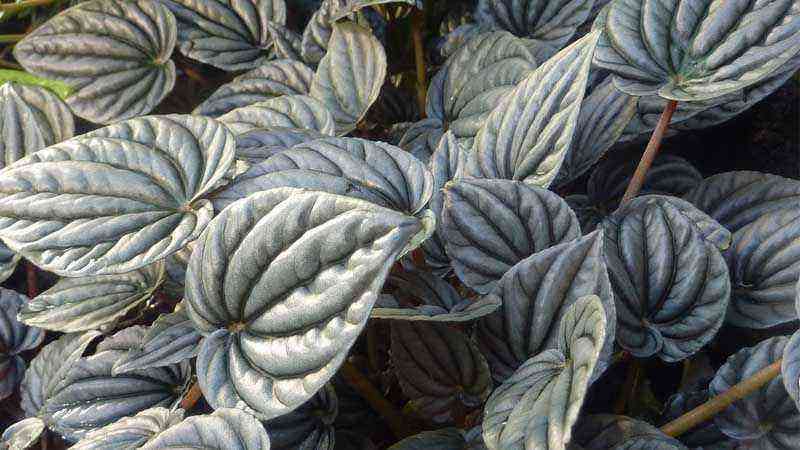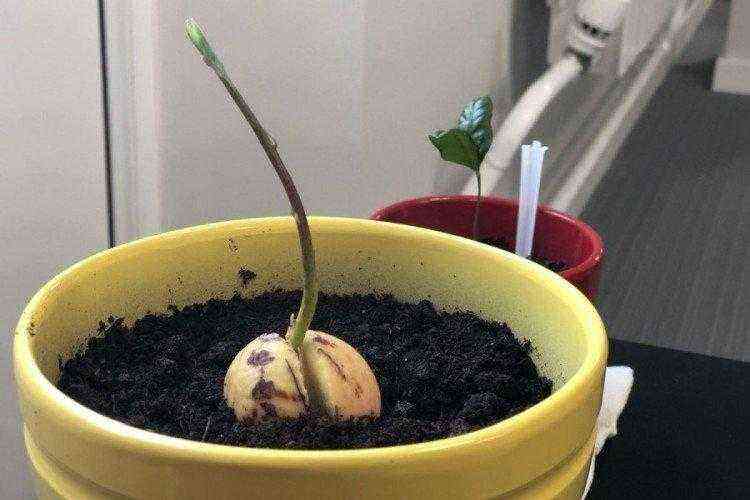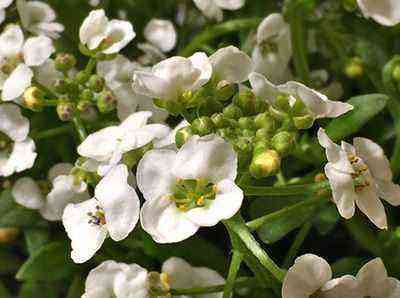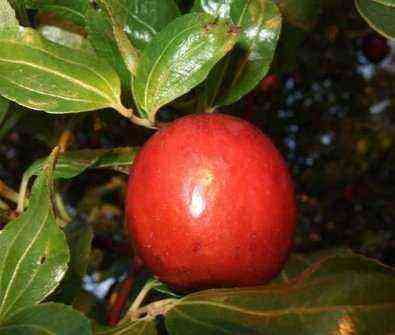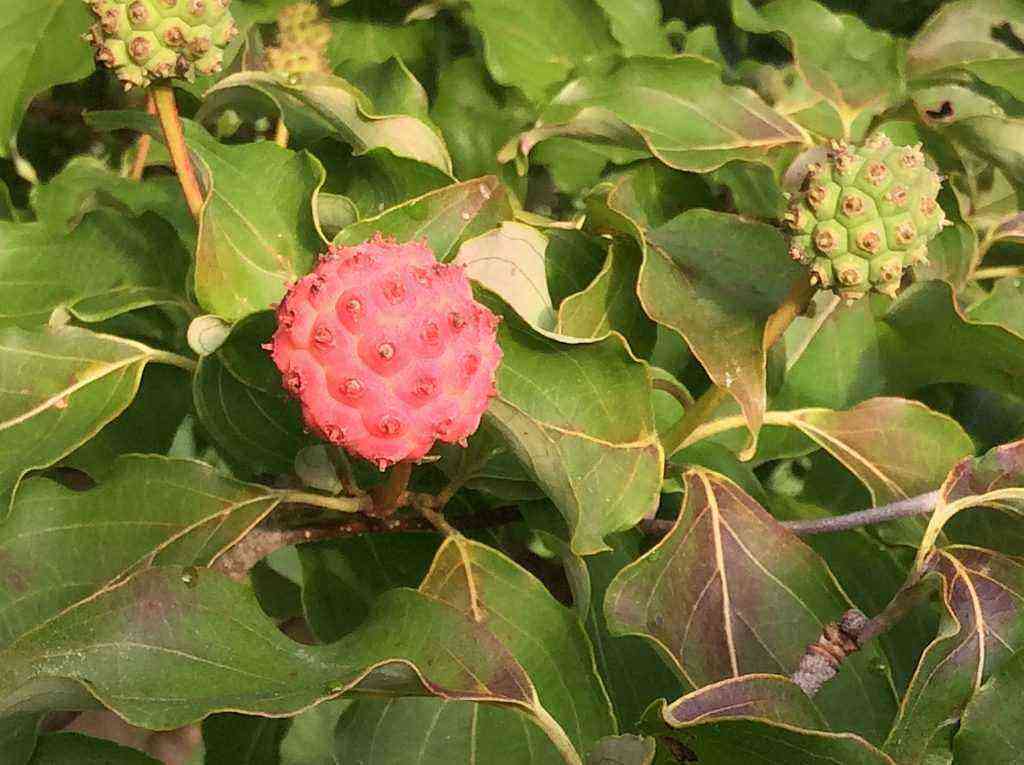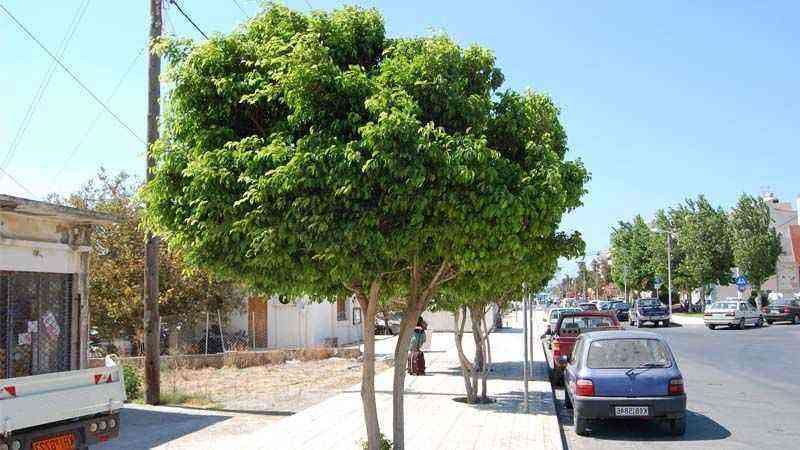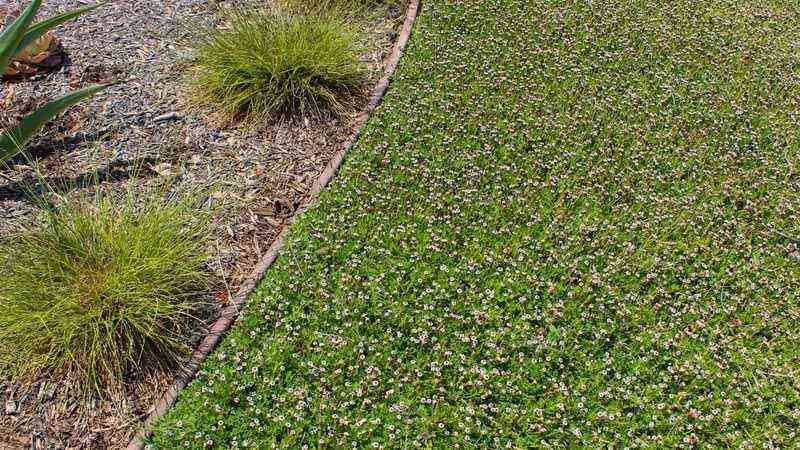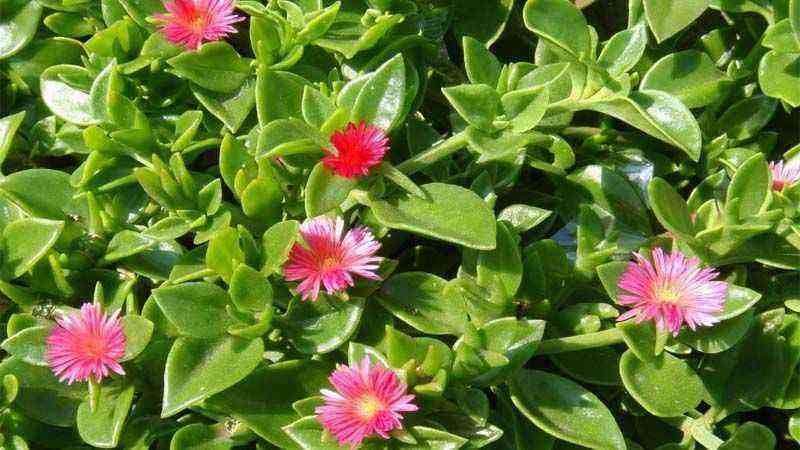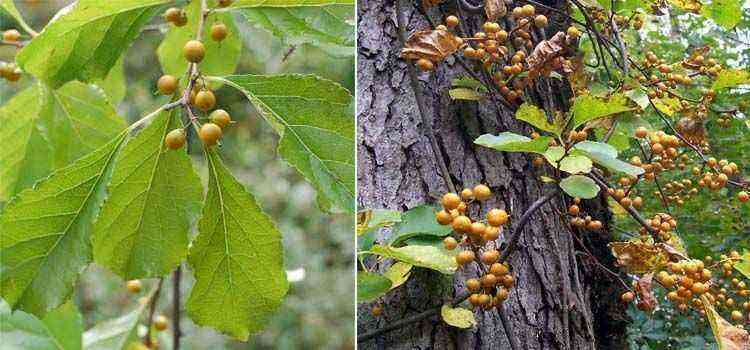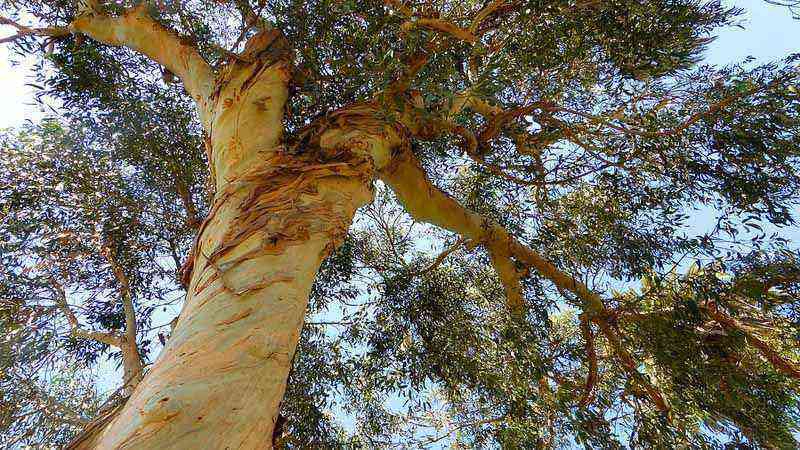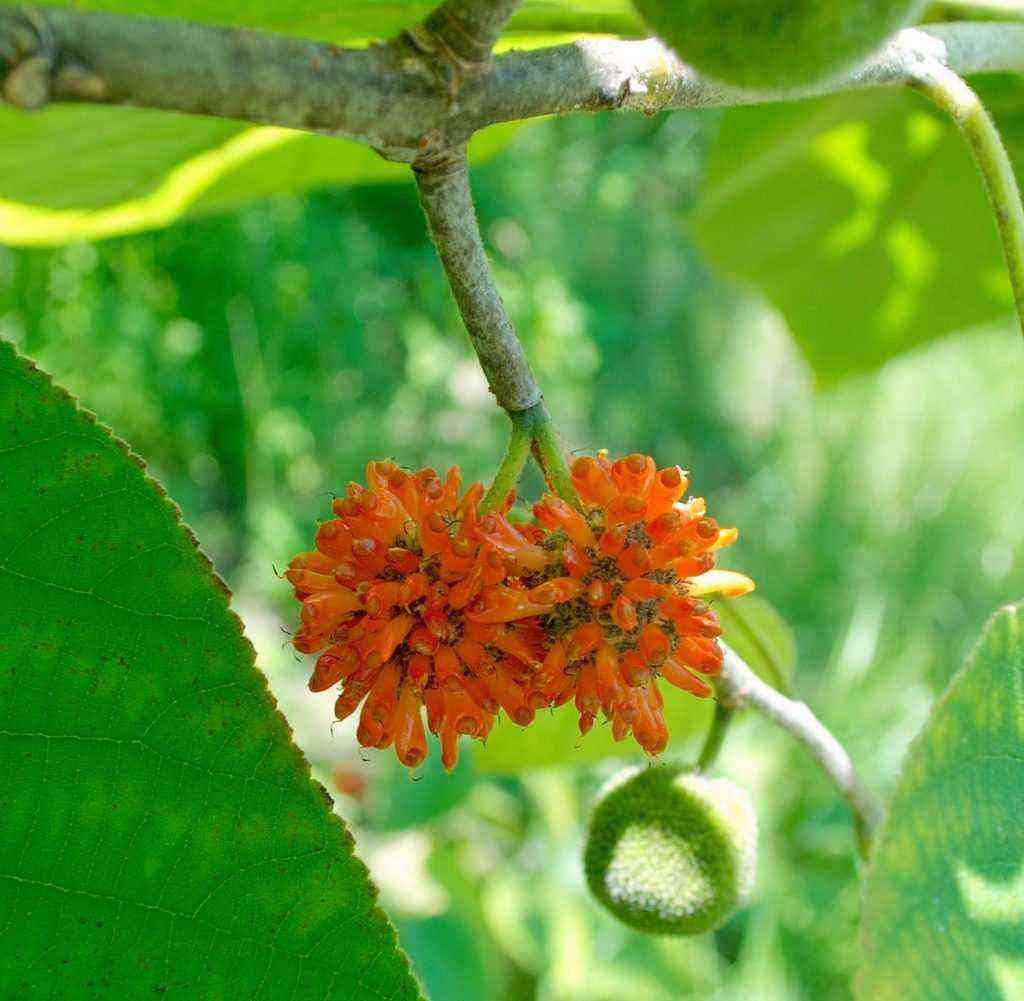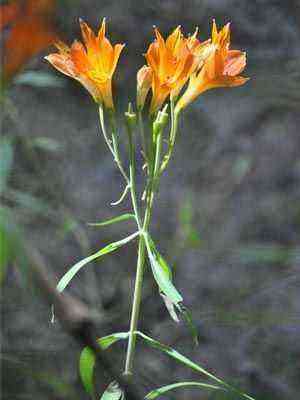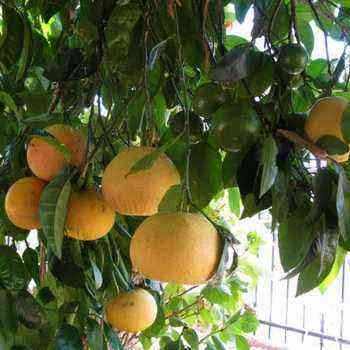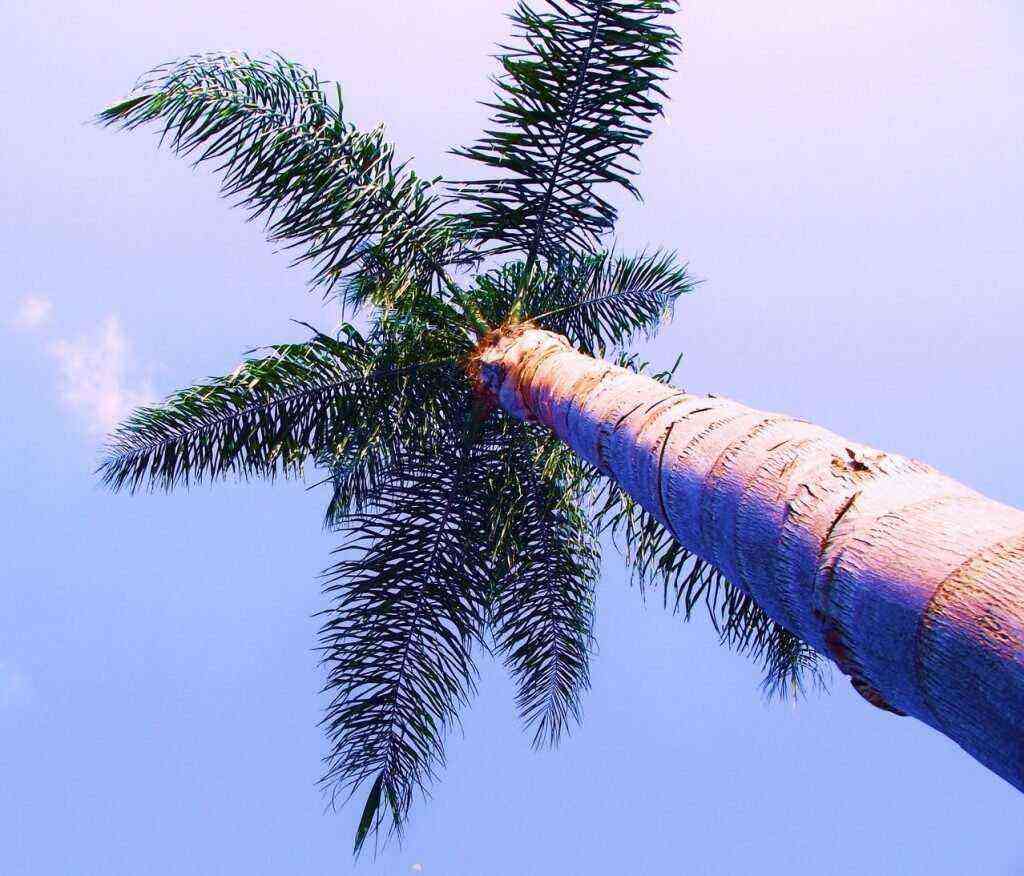The plant has several popular names: wolf bast, deadly wolfberry, bad man, wolf berries, etc. All parts of the plant contain dangerous toxins, but ripe berries are the biggest threat. Only 10 berries lead to serious poisoning, which can end tragically.
Common wolfberry is a plant species belonging to the family of Volchnikovs or Thymeleevs (Thymelaeaceae). This deciduous shrub rarely exceeds 1.3 meters in height. Shoots are few, straight, easy to bend, but hard to break. The bark is yellowish gray.
Leaves are formed only at the ends of the shoots. They are alternate, elongated (up to 10 cm), tapering to short petioles, entire. The color of the upper plate is dark green with a bluish tint. The lower part of the leaf is greenish-silvery.
The flowers are small, bell-shaped, four-petalled, very fragrant. The color is predominantly lilac, less often white, cream, lilac. Formed in bunches or singly in the axils of last year’s leaves; it seems that they are directly on the shoots.
Flowering ahead of leaf opening, lasts more than 3 weeks. The fruits are red drupes containing shiny spherical seeds.
Showy shrubs
All daphne are deciduous or evergreen shrubs. They differ in miniature size, not exceeding 1–3 m in height, and some alpine species rise only a few centimeters above the ground. The leaves of wolfberry are solid, long, narrow or elliptical. Daphne blooms in late winter – early spring. The flowers are small, but numerous, densely cover the shoots of the previous year or are collected in dense caps on the tops of the stems. The petals are colored pink, lilac, greenish-yellow, and may be white.
Blooming wolfberry delights not only the eyes, their flowers emit a strong and very pleasant aroma, which differs from species to species.
Flowering is quite long, from two to three weeks, and in cold weather – up to a month.
Application
Common wolfberry is used both in traditional medicine recipes and in official science. Research into the elements of wolf bast continues to this day.
In medicine
The common wolfberry in the circles of pharmacologists is called a plant with great prospects. The healing properties of daphne are still being studied.
For example, studies of meserein have identified its active constituents in the treatment of leukemia.
Daphne began to be used in medications for cancer and thrombophlebitis. For the treatment of a number of diseases, the Mezereum homeopathic remedy is widely used, which is produced from chopped fresh bark.
The drug is successfully used for:
- herpes zoster;
- weeping rashes on the skin;
- trophic ulcers;
- toothache;
- migraines;
- stomach problems;
- joint pain.
Traditional medicine uses tinctures, extracts, ointments from the bark, berries and greens of wolfberry. So with the external use of such agents from Daphne, you can get rid of the manifestations of neuralgia, radiculitis, joint pain, polyarthritis.
Washing the eyes with a decoction of wolf bast helps with conjunctivitis and other inflammation of the eyeball. Taking tinctures inside folk healers are prescribed for toothache, tonsillitis, tumors in the pharynx and esophagus, jaundice, dysentery. Daphne flowers are used as an anthelmintic.


Homeopathic remedy Mezereum
In other areas
Common wolfberry is often grown as an ornamental plant for creating landscape compositions. The shrub has a very attractive appearance during flowering and fruiting.
Gardeners appreciate the plant for its decorative effect.
Early flowering allows daphne to be used to create bouquets and compositions of primroses. If you cut a branch of a wolf bast in the cold season and put it in water, it will bloom quickly.
Despite the early pollination of the plant by bees, fresh honey cannot be eaten. It can cause inflammation of the intestines, ulcers in the esophagus. Before use, honey must be boiled and cooled. In Nepal, paper wolfberry is used to make paper, fabric, and very high quality ropes.
Attractive fruits
In the first half of summer, daphne attracts only with foliage unusual for our latitudes, which evokes thoughts of the flora of a warmer climate. But at the end of July and August, wolfberries again attract the eye with fruits of bright red, yellow or black color.
Unfortunately, in central Russia, fruit ripening can only be expected from wolf bast, but its bushes are fabulously good in autumn. Long narrow leaves acquire a pale yellow color, and between them numerous large red or yellow (in the white-flowered form of Alba) shiny berries sit on branches. They persist for a long time on the branches after the leaves fall, such bushes look great in the autumn garden against the background of dark conifers, fallen leaves, the first snow.
Symptoms of poisoning
The wolfberry plant is very toxic. For example, inhaling bark particles can burn the mucous membranes of the respiratory tract. The body’s response will be coughing, runny nose, sneezing. The penetration of toxic elements into the eyes will lead to the development of conjunctivitis.
The obvious symptoms of wolf bast poisoning are:
- severe abdominal pain;
- profuse salivation;
- frequent gagging;
- loose stools;
- blood impurities in the urine.
Different-beautiful
In European ornamental gardening, many types of daphne are used, some of which are too thermophilic for Russian conditions. However, wolfberry such as alpine (D. alpina)
and
branched (D. arbuscula)
, may well decorate our gardens. Of the species common on the territory of Russia and, accordingly, more suitable for culture in harsh conditions, one can name
deadly wolfberry (D. mezereum)
,
Altai (D. altaica)
,
Caucasian (D. caucasica)
,
Julia (D. julia)
,
pontic (D. pontica)
.
Distribution and habitats
The deadly wolfberry is widespread throughout Europe, but clearly gravitates towards the northern regions. The Kola Peninsula, Taimyr, Yamal – winters well everywhere. In the east, it reaches the Irkutsk region, then – as an invasive plant in single specimens. In the south, it is found up to the foothills of the Caucasus, but already in Moldova or Kazakhstan it is listed in the Red Book.
Ecological preferences of wolfberry – undergrowth of mixed and larch forests. It grows well in shade surrounded by forest herbaceous plants.
Meet the wolf bast
The deadly wolfberry, or wolf’s bast (D. mezereum), has proved to be the most unpretentious in culture.
… In nature, this species is found in forest areas in the north and in the middle zone of European Russia, in Western Siberia, in the Caucasus, in Western Europe. The plant got its name for its strong bark, which is very difficult to break. If you try to pick a flowering twig, never bring your fingers to your mouth or eyes afterwards without first washing them.
Deadly wolfberry or wolf bast (D. mezereum)
The wolf’s bast is perfectly adapted to the harsh growing conditions, therefore, it is unpretentious in culture. This type of daphne is frost-hardy, does not require shelter for the winter, and prefers partial shade in the garden. It responds well to the introduction of peat into the soil. Flowering occurs very early, before the leaves open, usually begins in early to mid April. The lilac four-petal flowers that densely cover the shoots of last year are very reminiscent of lilacs, but the strong smell has nothing to do with the scent of the messenger of summer. Most of all, it resembles a bright, refined smell of wax inflorescences of two-leaved Lyubka.
Genus Wolfberry, or Wolf (Daphne), from the family Wolfberry (Thymelaeaceae)
has about 50 species distributed in Europe, Asia and North Africa. Carl Linnaeus, giving scientific names to the plants, christened daphne daphne, possibly because the leaves of some evergreen species of daphne look like laurel leaves.
Blooming wolf is not afraid of spring frosts and snowfalls and is very valuable for early flowering periods. In central Russia, only hazel can compete with him in this regard.
Pharmacological properties
Traditional medicine rarely uses wolf’s bast in medicines. But in the folk it is used quite often. However, such recipes should only be used after consulting a doctor.
Different parts of the shrub have valuable pharmacological properties:
- pain relievers;
- antiepileptic;
- antimicrobial;
- antitumor;
- anticoagulant;
- anti-inflammatory.
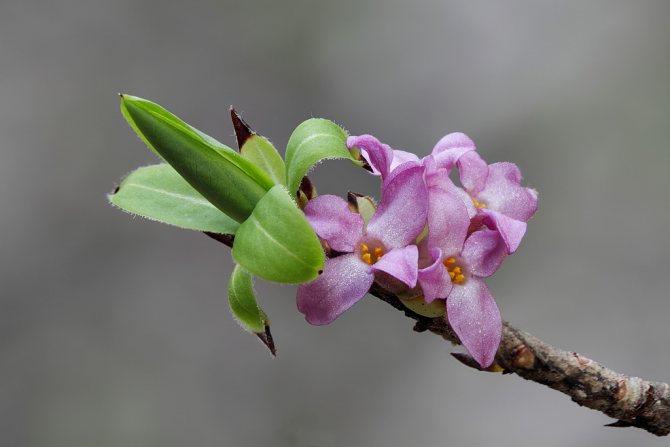
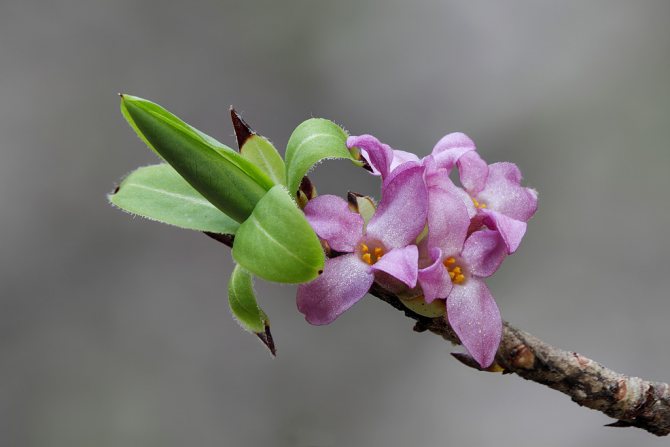
Despite the large list of therapeutic effects, the use of wolfberry is allowed only under medical supervision.
Indications for use
The common wolfberry has found its application in homeopathic preparations. Daphne-based products can only be used under the supervision of a treating doctor.
The wolf’s bast is part of the funds from:
- epilepsy;
- neuroses;
- toothache;
- thrombophlebitis;
- paralysis;
- gout.
The bark of daphne, in crushed form, is applied to the site of the bite of a scorpion, a snake. Decoctions and infusions of leaves and berries in folk medicine are prescribed externally and internally for:
- rheumatism;
- boils;
- convulsive manifestations;
- tumors.
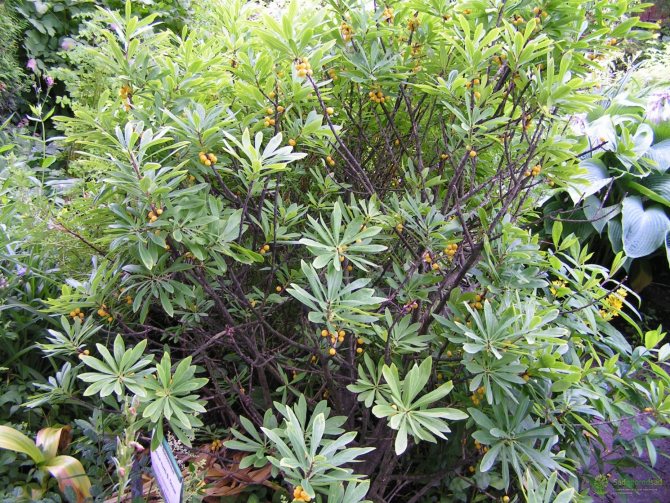
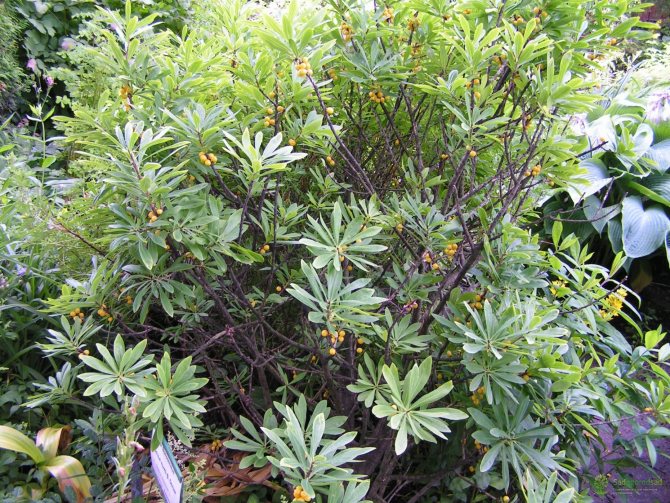
Wolfberry leaves Beautiful but dangerous wolf flowers
Contraindications
Traditional medicine from daphne is strictly contraindicated for pregnant women, children and people with allergies to certain components of the drugs. This is due to the high content of the toxic substance. So, eating a handful of mouth-watering berries, you can get fatal poisoning.
Contact with a bush leads to irritation on the skin, tissue necrosis.
Do not use drugs based on wolfberry for any type of internal or external bleeding, because wolfberry helps to reduce blood clotting.
The following population groups should not be used as medicinal products or come into contact with the plant:
- To old people;
- persons with renal failure;
- children of any age;
- lactating women;
- patients with heart failure;
- patients with stomach ulcers.


Elderly wolf is categorically contraindicated


For children of any age, wolfberry is a mortal danger
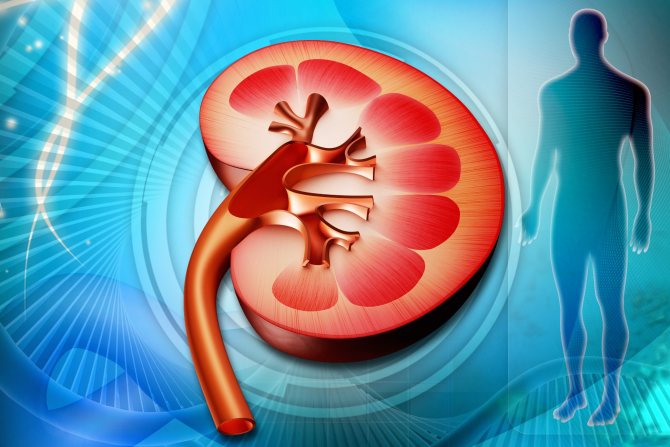

The plant is not used for renal failure


Daphne is not used for gastrointestinal pathology
Cultural varieties
Large-flowered form of wolf bast (f. Grandiflora)
Currently, in addition to the natural white-flowered form, there are the following cultural varieties of wolf bast. Large-flowered form (f. Grandiflora)
with larger than those of the natural species, bright purple flowers,
double (f. Plena)
with white double flowers,
cultivar Bowles Variety
– a plant up to 2 m tall with pure white flowers and yellow fruits,
cultivar Rubra Select
with large reddish flowers,
variety “Variegata”
with white-bordered leaves.
While admiring the bright fruits, remember that the wolfberries got their name for a reason – most species, including the wolf’s bast, are very poisonous. All parts of the plant are dangerous: bark, leaves, flowers, fruits. 10-15 berries contain a dose of poison that is fatal to humans, so if children visit the garden, it is better to cut off the fruits.
Chemical composition
All parts of the shrub contain a resinous substance of yellow color with a burning taste. It is called mezerein and most of all it is in the berries themselves, the bark.
Meserein causes severe skin irritation followed by blistering.
Once inside, the burning element causes severe vomiting and diarrhea. In addition, the wolfberry contains coumarin, daphnin and kakhetian. The first element has a pronounced disinfectant effect. The two remaining substances cause internal bleeding because they antagonize the production of vitamin K.
The plant’s special danger is concentrated in berries.
They include cocognin, which is a very poisonous substance. When ingested, it leads to severe poisoning.
The chemical composition of the plant contains:
- benzoic acid;
- bitterness;
- mineral salt;
- essential oil;
- natural wax;
- dye;
- tannin;
- flavonoid.
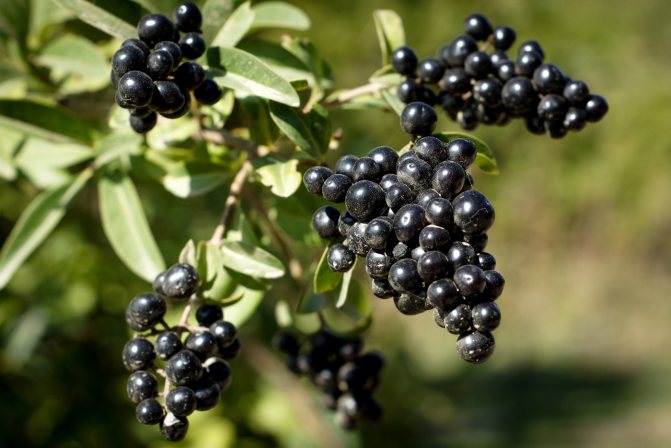
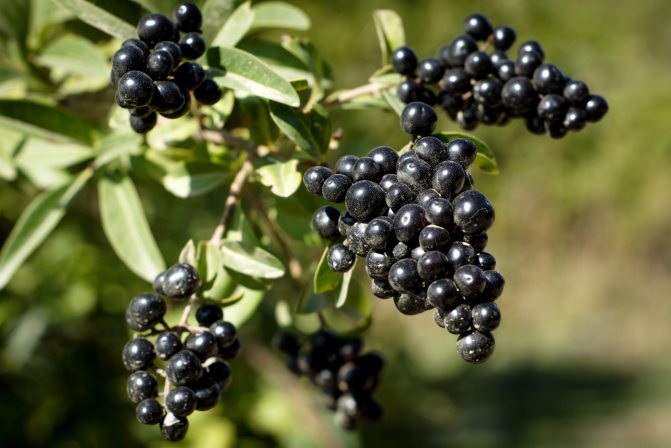
Berries contain meserein and coumarins – deadly toxins for humans
Altai wolfberry
Altai wolfberry (D. altaica)
Altai wolfberry (D. altaica)
found in nature mainly in the Western Altai. It is a deciduous shrub 0.5–1.5 m tall, often looking like a miniature tree with a strong stem. The leaves are elongated, the flowers are white, collected at the ends of the branches in capitate inflorescences. Blooms profusely in May-June, after the leaves bloom or at the same time. The fruits are bright red, brownish black or black. Weak re-flowering often occurs in September-October. Photophilous, winter-hardy.
Cultivation
Let’s talk about growing and caring for wolfberry.
location . The wolf is a shade-tolerant plant, but grows best in partial shade, can develop in a sunny place. Many species are hardy.
Soil and watering . Shrubs prefer moist fertile soils with a high humus content. The land must be well drained. Water the plants as the soil dries out; overdrying should not be allowed. It is recommended to mulch the soil around the shrub. The root system consists of many roots lying close to the surface, their damage almost always leads to decay. For this reason, the soil around the plants is not loosened. Fertilizers are applied only before planting a wolfberry, further feeding is not needed.
Trimming . The wolfberry is pruned in the fall. During this period, weak, dried or diseased shoots are removed, and symmetry is given to the shape of the bush. It is impossible to cut the branches too much, since the wolf hardly forms new shoots, growing along the perimeter of the crown. Formative pruning is carried out in the first years of plant development, for which the shoots are slightly shortened, achieving tillering.
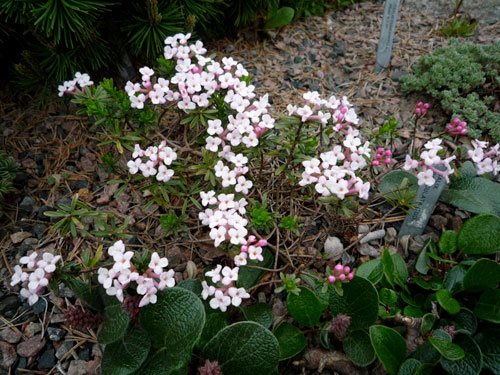

Hybrid (D. x thauma)
Pontic volcano
Pontic wolf (D. pontica)
Pontic wolf (D. pontica)
originally from the Western Ciscaucasia. In the garden, he prefers fresh fertile soil and open spaces. Evergreen shrub 1–1.5 m tall. The leaves are large (up to 10 cm long), oval, dark green, shiny. Flowering occurs in early summer. The flowers are yellow-green, fragrant, rather large for daphne (about 2 cm in diameter), collected in the leaf axils. The fruits are juicy black berries. Although it winters well in central Russia, it blooms irregularly and does not set fruit.
Procurement of raw materials
Collect different parts of the plant wolf bast in gloves, which will protect the skin of the hands from the effects of toxic compounds.
It is important to harvest the bark for tinctures and decoctions in early spring before flowering.
It is cut into thin strips, dried in the fresh air or in ventilated rooms. It is necessary to spread the bark in one layer with the inner side up.
Berries are picked in July and August. They are sorted out of garbage and dried in dryers or under the sun.
Method of preparation
For use in traditional medicine, tinctures, decoctions and powders are prepared. The main methods for preparing raw daphne are as follows:
- The broth is made from 20 grams of crushed roots and 100 ml of boiling water. The ingredients are placed in an enamel pan and heated for 30 minutes in a water bath. After that, the broth is cooled, filtered. Prepare a fresh liquid before each use.
- Powder from the root or leaves is made from dry raw materials. It is ground with a crush or blender and stored in cloth bags in a dark place.
- Daphna tincture is prepared from 1 part of crushed bark and 64 parts of alcohol. The solution is insisted for at least a week in a dark cool place.
The ointment is made from 5 parts of wolfberry tincture and 10 parts of petroleum jelly.
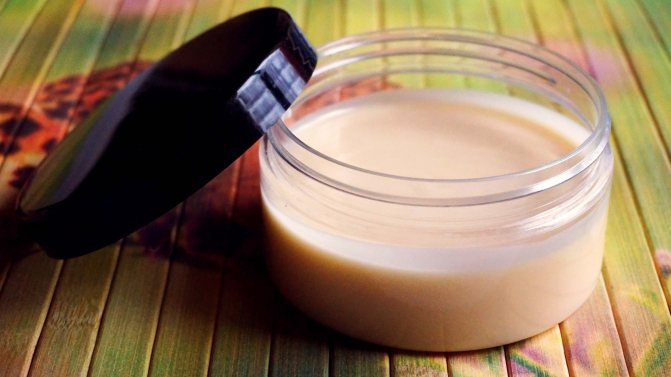

Wolf ointment
